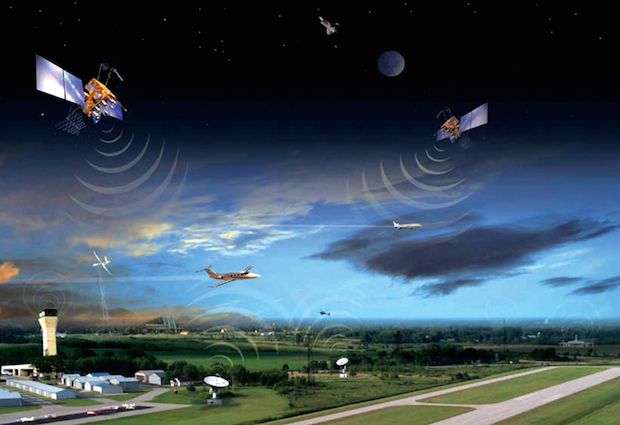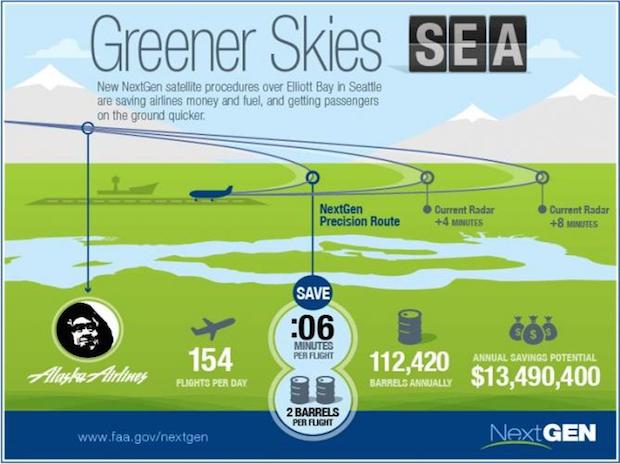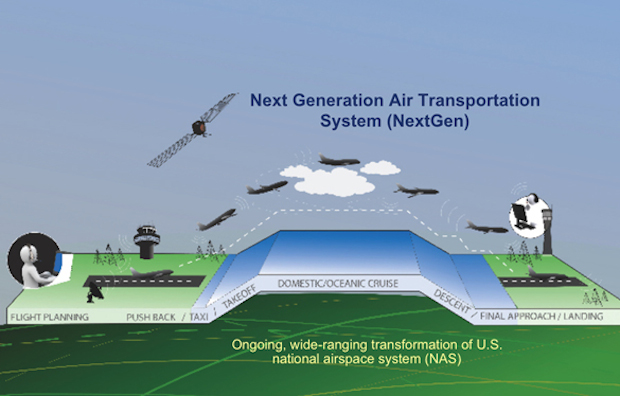Charged: The Future of Flying
Until now, the friendly skies have largely been governed by World War II-era technology, but a bold new program is poised to revolutionize the industry

Early this year, the Federal Aviation Administration (FAA) began rolling out an ambitious overhaul program targeted at streamlining the passenger experience. Called NextGen, the initiative aims to usher in the next generation of air travel. Drawing on the country’s National Airspace System enterprise architecture, everything from air traffic control to departure paths to weather systems are being redesigned in favor of smarter, greener technologies.

The first layer of the program targets wait times on the tarmac and the first-come-first-serve policy that lead to widespread delays during heavy traffic times. In the past, pilots were allowed to push back from the gate once the plane was boarded, creating a queue on the tarmac that wasn’t synchronized with scheduled take off times. To combat the problem, the FAA introduced a smart, on-board system that communicates boarding status and location with the control tower in real-time, so push-offs can be allotted to planes based on an orchestrated system rather than the pilot’s discretion.

NextGen’s second phase addresses the flight plans of planes. Previously air-traffic controllers could only authorize planes to follow a singular takeoff path, but thanks to satellite technology controllers are now able to plot new precision flight routes based around the current air traffic. Officially known as Automatic Dependent Surveillance-Broadcast, or ADS-B, the system provides GPS capabilities to both traffic controllers and pilots so they can for the first time have real-time positions of every plane in the sky. Already in application in Atlanta, the world’s busiest airport by way of passenger volume, the new satellite-enable technology is increasing the amount of flights that are able to take off at the same time, enabling 8 more planes to depart each day.

The precise on-board satellite technologies are also helping counter air travel’s most persistent nemesis: bad weather. The satellite technology, dubbed Next Generation Network Enabled Weather (NNEW), synthesizes weather information from ground, airborne, and space-based sources into a singular stream, meaning every air traffic controller has access to the same status updates and are able to make decisions as a collective.

The sum of these seemingly simple upgrades is a total industry overhaul that will replace the World War II-era technologies that have caused much of the congestion and waste associated with air transportation. By 2020, every plane and airport will have complete transparency in regards to air and ground traffic, making planes not only safer but more efficient.
All images courtesy of the FAA.












